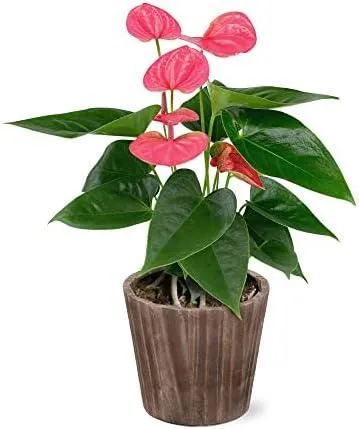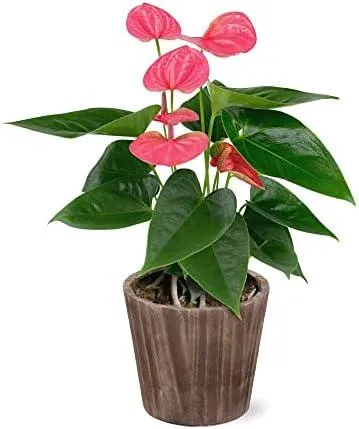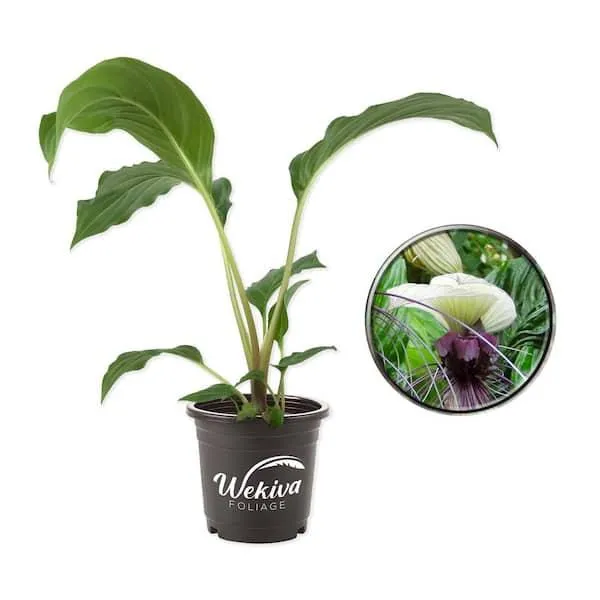Are Anthurium Plants Safe for Cats?
If you have a cat and want to decorate your home with houseplants, you may wondering whether anthurium plants are a safe option. Anthuriums, known for their heart-shaped leaves and colorful waxy flowers, are a popular indoor plant choice. But as a cat owner, it’s important to consider if anthuriums could pose any dangers. In this article, I’ll address a cat guardian’s main concerns and provide expert advice on anthurium safety.
Toxicity Concerns
All parts of the anthurium plant – including its leaves, stems, flowers and sap – are mildly toxic to cats if ingested. From my experience as a veterinary nurse, the main toxins of concern in anthurium are calcium oxalate crystals. These crystals can cause mouth irritation and vomiting if a cat chews on or swallows any part of the plant. At high amounts, calcium oxalate poisoning could potentially damage the kidneys.
Risk Factors
Whether an anthurium presents a true risk depends on several factors:
- Curiosity – Kittens and playful cats may be more inclined to taste plants.
- Accessibility – Place plants out of reach of jumping/climbing cats.
- Boredom – Provide cats with toys/scratching posts to entertain them.
- Allergies – Rare cats may have allergic reactions to anthurium pollen.
In general, anthurium toxicity is considered low compared to highly dangerous houseplants like lilies or philodendron. But because cats are natural grazers, any ingestion should be taken seriously. Let’s look at ways to minimize the chances of an anthurium causing problems.

Creating a Safe Environment
Here are some tips from my experience keeping houseplants and cats:
- Place plants high on shelves or tables, not at cat level. I’ve found wall shelves or hanging planters very effective.
- Use sturdy plant guards or barriers to keep curious paws away. Mesh screens or plastic tubing around the stems work well.
- Assess each cat’s personality. More rambunctious kittens may require keeping anthuriums out of their room.
- Coach cats to avoid plants whenever you see interest or pawing at leaves.
- Consider placing anthuriums in a separate “cat-proof” room, like an office or sunroom.
With proper precautions, it’s certainly possible to safely include anthuriums even with feline friends around. But it’s always wise to take the conservative approach with any potentially toxic plant. Removing tempting opportunities for nibbling will give peace of mind.
Signs of Toxicity and What to Do
Despite our best efforts, occasional nibbles may occur. It’s crucial to know the warning signs:
- Vomiting
- Diarrhea
- Loss of appetite
- Excess salivation or lip-smacking
- Dilated pupils
If signs appear, call your vet right away. They may induce vomiting and/or administer activated charcoal to absorb any remaining plant toxins in the stomach and intestines. Most cases of anthurium exposure respond well to prompt treatment. But it’s always best to prevent issues in the first place.

Final Thoughts
In conclusion, while mildly toxic, well-behaved anthurium plants can coexist peacefully with cats when common-sense safeguards are applied. From my experience, inquisitive kittens require the most attention. With barriers, accessible hiding places for plants, and toxin education for guardians, these beautiful blooms don’t need to be off limits. An observant and cat-proof home is the key to enjoying tropical houseplants safely. Just be cautious and don’t take risks with a pet’s well-being. Overall, anthurium plants seem quite compatible with felines when handled judiciously.
I hope this detailed perspective has helped address any concerns over anthurium safety for cats. Please let me know if you need any clarification or have additional questions! Our furry family members deserve the best care.
Anthurium Plant Safety Around Cats
| Plant Part | Toxicity Level | Symptoms |
|---|---|---|
| Leaves | Low | Mild digestive upset if large quantities ingested |
| Flowers | Low | Mild digestive upset if large quantities ingested |
| Stem | Low | Mild digestive upset if large quantities ingested |
| Roots | Moderate | Vomiting, diarrhea if moderate quantities ingested |
| Berries | High | Vomiting, diarrhea, possible organ damage if ingested |
| Pollen | Low | Skin or respiratory irritation possible with heavy exposure |
FAQ: Is an Anthurium plant safe for cats?
-
What is an anthurium plant?
An anthurium is a flowering plant with heart-shaped leaves and colorful waxy blooms. It comes in many varieties and is popular as a houseplant.
-
Are anthurium plants poisonous to cats?
No, an anthurium itself is not toxic to cats. The leaves and flowers are generally considered non-poisonous for cats. However, cats may chew on it due to curiosity.

-
What are the risks for cats?
While anthuriums are not toxic, there is a small risk if a cat eats a large amount of the plant. They could experience mild stomach upset. The sap may also cause irritation or allergic reactions on their skin or in their mouth.
-
Is it safe to have an anthurium near a cat?
As long as the anthurium is out of reach of chewing or playing, it can be grown near cats. Just keep an eye on curious kitties and remove any damaged or fallen pieces right away that they could ingest.
-
What precautions should be taken?
It’s always best to cat-proof your home and remove houseplants when you can’t supervise. Monitor your cat and remove the plant if they show interest. Clean up stray leaves or flowers immediately. While an anthurium probably won’t poison a cat, it’s better safe than sorry.
-
Can cats be around other types of houseplants?
Many common houseplants can cause issues for cats due to toxins in their leaves, stems, seeds or sap. It’s wise to research any plant thoroughly before bringing it into a home with cats. Sometimes you just have to accept that kitty-friendly and plant-lover don’t always go together!

-
“Is it worth the risk?”
For many pet owners, the small risk may not be worth it when there are so many cat-safe houseplant options. Anthuriums look amazing but you have to weigh that versus your cat’s safety. Only you can decide what’s right for your situation.
On the other hand, with the proper precautions anthuriums can be safely grown alongside feline friends. Constant supervision may be required with very mouthy kitties. One person’s “worth the risk” could be another’s “not a chance” based on individual cat personalities too. In the end, knowing your pet’s behavior well is key to avoiding potential issues.
